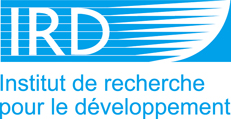Guillaume Constantin de Magny
Guillaume Constantin de Magny, PhD, has a background education in ecology and population dynamics analyses. After receiving a Master of Science degree in statistics and mathematics applied in Biology from Lyon University in 2001, he obtained his PhD in Ecology and Evolution from the University of Montpellier in 2006. During the 4 years he spent at the French Research Institute for Developing Countries, his research thesis focused on the impact of climate variability on human health in Africa. He was particularly interested by applying concepts from ecology to the understanding of cholera epidemiology in Africa. In 2006, he was new member of the University of Maryland Institutes for Advanced Computer Studies as Research Associate, conducting research on ecology of Vibrio cholerae and epidemiology of cholera with the goal of developing predictive models of Vibrio cholerae in the environment and cholera outbreaks in human population. His research interests included epidemiology of infectious diseases in relation to temporal time series data of climate and physical indices in an oceanographic setting obtained by remote sensing. His work is part of ‘Oceans and Human Health Initiative’ grant led by Dr Rita Colwell and financed by National Oceanic and Atmospheric Administration.
Ecology of Vibrio cholerae, epidemiology of cholera: What role for climate?
Several factors, including environmental and climatic factors, influence the emergence and transmission of cholera in human populations. Cholera provides a useful target since Vibrio cholerae, the causative agent of cholera occurs naturally in rivers, estuaries, and coastal water. Furthermore, it has been shown that V. cholerae live attached to copepods, a significant component of zooplankton populations. Temperature and rainfall have been shown to be related to the ecology of V. cholerae. In this study, we performed a comparative analysis of temporal dynamics of cholera cases in three geographically contrasted locations in Asia, i.e. New Delhi, and Kolkata in India, and Matlab in Bangladesh, to detect and quantify periodicity and synchrony between them. We also investigated the local and regional climate conditions over these locations in relation to cholera transmission.
We have analyzed the temporal dynamics of cholera cases and climate factors from seasonal to interannual time scales in the three locations using wavelet approaches that can describe nonstationary phenomena and that also allow the quantification of nonstationary associations between time series. Climate factors included rainfall, and land surface temperature.
The seasonal patterns of cholera in the three locations show annual or bi-modal pattern. Phase analyses show the relationship between the periodic components of the three signals on an annual basis. The three dynamics are slightly out of phase with the cholera season starting first in Delhi followed by Kolkata and then Matlab.
This comparative analysis of cholera dynamics highlighted the similarity and difference of the cholera temporal dynamic patterns in three distinct locations in Asia. It suggests a need to perform a global survey of cholera over the long term, which would permit better assessment of the risk of disease outbreaks through near real-time climate monitoring, and will be useful for public health planning and decision making.
If you wish to contact Guillaume Constantin de Magny, please click here




